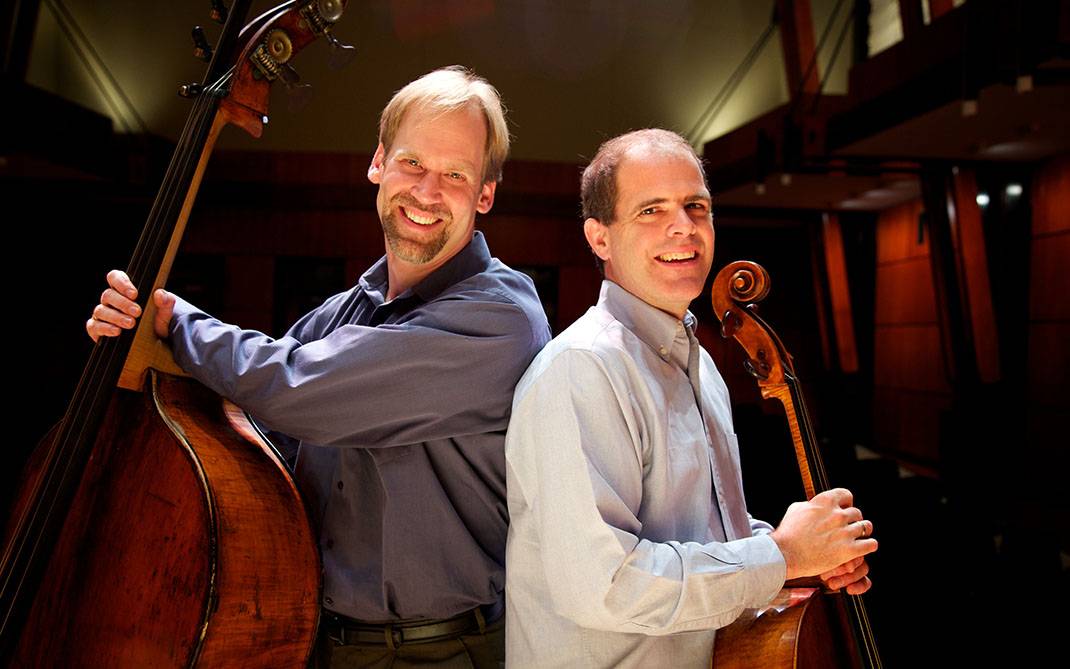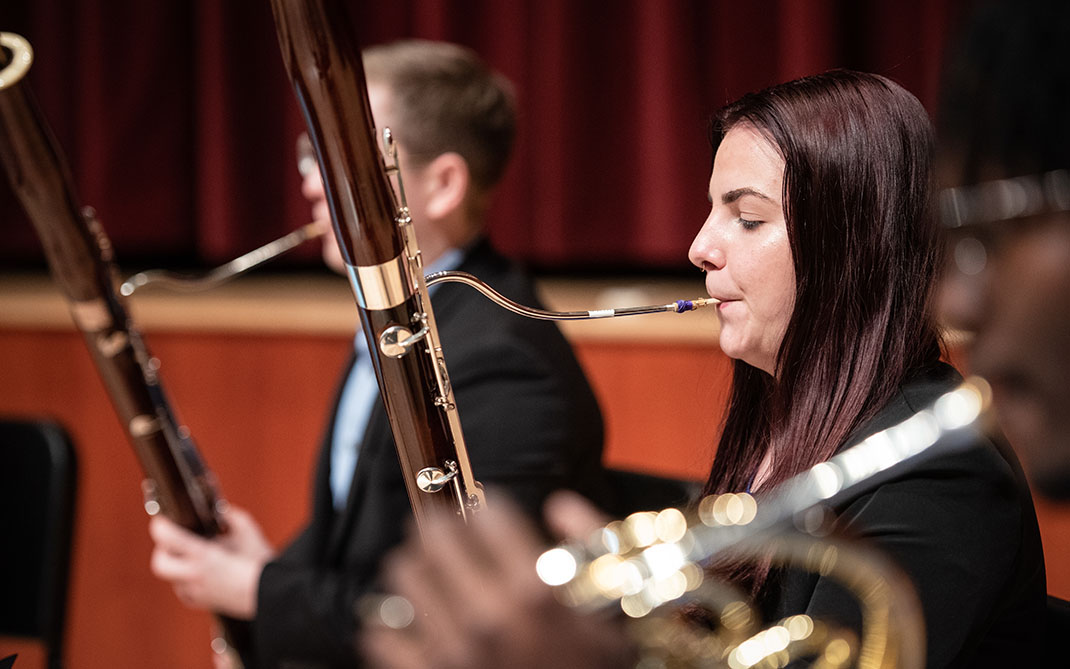Artistic Direction: Turning STEM into STEAM
This story is syndicated with permission from UNC General Administration.
Lindsay Bierman wants to make sure his students are on the cutting edge of science and technology.
At first, that might seem like an odd aspiration for the chancellor of the University of North Carolina School of the Arts, whose students study everything from dance to costume design.
But there is sound reasoning behind Bierman’s desire to innovate STEAM disciplines by adding the arts to basic STEM courses – technology is advancing at such a pace that UNCSA students are already incorporating it into their work. As Bierman noted, the arts mean a great deal to North Carolina: UNCSA itself had a $100 million impact in 2013, or the equivalent of 1,800 jobs, and the arts and culture as a whole contributed $40 billion to the economy in 2011.
What is the intersection between art and engineering? I think that there’s no end to the amount of economic development that we can drive through pairing artists and engineers.
Chancellor Lindsay Bierman
Michael Tiemann, chairman of the UNCSA Board of Trustees, believes that scientists and engineers can benefit from having artists weigh in on their work, and he has intimate knowledge of this area. Tiemann was a pioneer in creating open-source software and co-founded Cygnus Solutions, acquired by Red Hat where Tiemann now serves as vice president for open-source affairs.
“The idea of turning STEM into STEAM has been around for a few years since the design community has been recognized as essential to the entrepreneurial community and larger business community,” he said. “Red Hat integrated design-thinking into its core very early on, and when people talk about the strength of the brand, it comes from design thinking and design principles. And, one of the greatest things we can do for the STEM community is to awaken them to the role that the arts has to play in the future of innovation.”
Tiemann concluded that scientists and engineers who only think about projects through test tubes and microscopes will be “ill-equipped” to maximize their business potential.
Broadening the Vision
According to Bierman, UNCSA is taking a multi-pronged approach to mixing in the latest in technology to both instruction and in artistic presentations. An anonymous donation to the school has allowed the creation of the Institute for Performance Innovation, which will evaluate how science and engineering will affect future performance, and will position UNCSA at the forefront of the global arts and entertainment industry.
Think about the impact technology has on something like music. Already, digital technology has disrupted the industry as well as with sound design and sound scoring,” he said. “We have a film-scoring stage that I think is an underused asset. It can open new career pathways for traditional music students.
Bierman envisions arts students working with virtually any and every profession thanks to the partnership between arts and sciences through technology. For example, UNCSA and its Thomas S. Kenan Institute for the Arts have supported the 2016 Creative Startups Accelerator Program winner, Embodied Labs—a collaboration between a UNCSA Film alumnus and Wake Forest University medical alumni—in creating a virtual reality program that simulates macular degeneration for medical students to experience their patients’ symptoms.
“The artists provided the sound, the animation and other elements so that it was a very meaningful collaboration,” he said. “The simulations were a really powerful tool.”
Meanwhile, the School of Dance is working with elderly populations to increase their physical activities, and Bierman noted how music has been shown to help Alzheimer’s patients with their cognitive functions.
Education is another field that artists can contribute to through technology, he said.
“You have to engage K-12 students with digital technology,” he said. “If we’re going to do it, we have to get ahead of it; otherwise, it will be too late.”
Cutting-edge Filmmaking
One discipline at UNCSA that always has embraced the latest in technology is the School of Filmmaking. Not only has computer-generated imagery, or CGI, revolutionized how movies and television are made, but it has also accelerated the growth of the video game industry. All of those industries need good storytellers, said Dean Susan Ruskin, and the storytellers need to know how to best use the latest tools.
Now, more than ever, we are moving into immersive entertainment, which is virtual reality, augmented reality. What is happening in our field is that artists and engineers are really working together in a space where they are creating technology as they are creating stories at the same time. I think we are seeing more of a blending between the arts and sciences.
Susan Ruskin
Ruskin, whose first job in the film industry was working for George Lucas, a pioneer in using special effects to create the “Star Wars” franchise, said technology has always been a part of the process. Given that technology improves at an almost exponential rate, she said it’s currently moving at “warp speed.”
“Companies like Google, Microsoft and Facebook are all getting into storytelling and content-creation games,” she said. “It’s changed how we tell stories, who we work with and how we work with people. It’s becoming a more social experience.”
One of the biggest milestones for UNCSA has been a partnership with Oculus, one of the premier companies in the world for virtual-reality technology. Oculus has selected UNCSA as one of 11 universities to work with its technology. Bierman said UNCSA students will help test the new programs for Oculus, then give the company feedback about how well it performs. Students, in turn, get hands-on experience using cutting-edge technology and software.
Other corporate partners for the university include Sony PlayStation, AMD and Radiant Images.
One of the ways STEM becomes STEAM is working with those companies whose focus might be on the technology side, but the use is clearly in the arts.
Susan Ruskin
Because VR technology is so immersive that the viewer feels like part of the experience, the faculty has had to adapt its approach to teaching filmmaking because what might work in shooting a regular, two-dimensional script may not work with a 360-degree format.
“For me, this is a better time than ever to think about how scientists and artists can work together to solve world problems, to create new products, to help human beings,” she said. “I think it can touch every aspect of life.”
The more versed the UNCSA students are in the latest technology, the better their job prospects will be.
Trent Spivey, a third-year student from Gastonia majoring in cinematography, said STEM skills always were a part of the filmmaking process in everything from lighting to set design.
“There is a lot of physics and chemistry involved,” he said. “That only compounds in digital. You see it in all departments.”
Still, virtual reality technology has changed the rules for film students. Spivey said it’s important that filmmakers remember technology is a tool – a means to service the story, not vice versa.
“My challenge is keeping the tech at bay,” he said. “You have to understand that it’s a tool. It’s a bigger and better paintbrush. At the end of the day, it’s all about the story. I do think movies are coming out simply because the technology is there to make them bigger and louder. On the other hand, it’s a tool that allows you to tell stories in a way they’ve never been told.”
Embracing Technology
Bierman said he’s had little difficulty in convincing his arts students to learn more about science and technology, even though some of them might have struggled in STEM disciplines in their K-12 educations.
While a few faculty members were initially nervous about incorporating the new tech into their lessons, Bierman said everyone is enthusiastic and excited about what it means for their disciplines.
“I think some people see emerging technologies are threatening traditional art forms. But I see them as enhancing them and strengthening them,” Bierman said. “I see tech as making the arts relevant to 21st century audiences. Some have been pushed out of their comfort zones to embrace the new technology. By and large, UNCSA faculty and students have been extremely receptive to incorporating new technology.”
Original publish date: May 9, 2017





